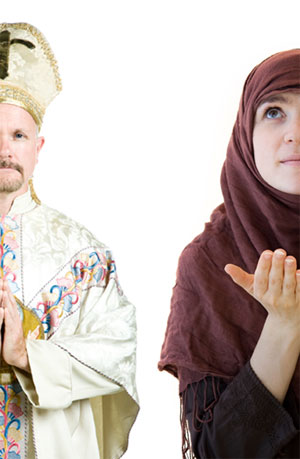
“WITHOUT EACH other we are impoverished.”
Those are the words of the World Council of Churches (WCC) inviting churches to continue their journey together “as a further step towards full visible unity”, adopted at their 9th Assembly in 2006.
The Uniting Church is one of the churches on a journey to unity.
It is easy to forget the massive achievement it was to bring together the Congregational Union of Australia, five denominations of the Methodist Church in Australia and three denominations of the Presbyterian Church in Australia to form not another denomination, but a movement for Christian unity.
This movement began in Australia in the 1850s within divided denominations and continued in 1901 when the Congregational, Methodist and Presbyterian Churches in Australia began exploring unity.
The foundational document of the Uniting Church, the Basis of Union, states in Paragraph One that the Churches coming into union were (and are) seeking fellowship with the whole church and “seeking to bear witness to that unity which is both Christ’s gift and will for the Church”.
Queensland Churches Together (QCT) General Secretary Glenine Hamlyn said that as Christians it is our responsibility to share that gift.
“This gift of unity has been given to us in Christ and in attempting to make that visible to the world we are showing a kind of foretaste of the fullness of reconciliation that is available in Christ,” she said.
“What kind of witness is it when people see that churches are still divided?”
The argument against working with other denominations is often that we should sort out internal differences first.
“That means you will never get around to working with other churches, but, you might learn from them how to approach your own problems,” said Ms Hamlyn.
World Vision Relationships Manager for Regional Queensland David Martin works with many denominations, which he said was initially a challenge.
“Working ecumenically has kicked my little Pentecostal pigeon-hole apart and helped me to see something much bigger than my own Christian group,” he said.
“I didn’t realise how insular my thinking was until I started talking to the various denominational groups.
“I have come to see all the various emphases in each group as being like the different facets of a beautiful diamond.
“They are different facets but the whole is the same diamond, which is a bit like the gifts of the Spirit listed in 1 Corinthians.”
In recent years a new dialogue has begun between different faith traditions. Interfaith dialogue, however, is not a modern concept.
When telling the parable of the Good Samaritan, Jesus was challenging his disciples and the Jewish leaders to accept that there needs to be dialogue with people of other traditions.
Ms Hamlyn said such parables set an example of how to work in interfaith settings.
“Those examples of how Jesus lived are an example of how we are to overcome our prejudices and constantly challenge our presuppositions and to talk to people of other faiths and discover the richness there is in their traditions,” she said.
“Of course Jesus wants us to talk about the message of the kingdom of God … but it would be against Jesus’ example to try to ram it down somebody’s throat or to try and get them to give up their own faith.”
Former Uniting Church President Rev Gregor Henderson told the One Humanity, Many Faiths summit, at Griffith University Multi-faith Centre in Brisbane in February this year, that the Uniting Church has been intentional about interfaith dialogue since 1988.
“The motivation was the acceptance of living in a multicultural and multi-faith society, the need to understand each other’s faiths, and a firm commitment to live in Australia with respect for people of other faiths and in peace,” he said.
The document Living with the neighbour who is different: Christian vocation in multi-faith Australia which stemmed out of the 8th Assembly of the Uniting Church in Australia in 1997 gives a theological guide to interfaith dialogue.
“In a world of human division, in which conflict is often fuelled by religious difference, it is imperative that Christians grow in their appreciation of other faiths and find ways in which we can work together with people of other faiths for the common good,” it stated.
The document draws attention to Biblical passages such as Acts 4:12 (“There is salvation in no one else, for there is no other name under heaven given among mortals by which we must be saved”) and John 14:6 (“I am the way, the truth and the life. No one comes to the Father except through me”) and suggests that these passages can be easily misread if taken out of context.
“A better approach is to view the Scriptures in their entirety.
“The love of God finds a particular and defining focus in Jesus Christ, yet that same love is present in the act of creation.
“Every person and every nation is embraced by that same love.”
 JourneyOnline
JourneyOnline






